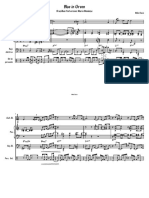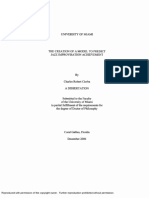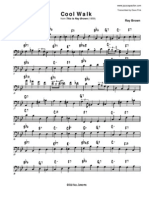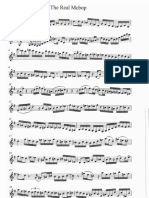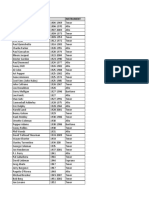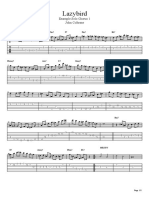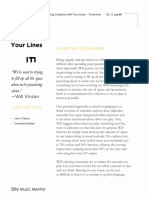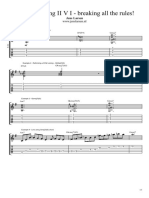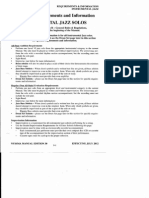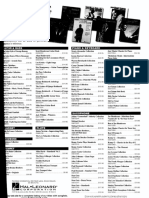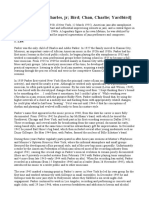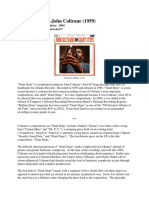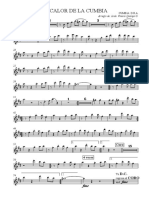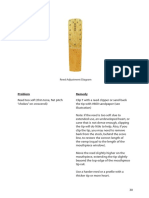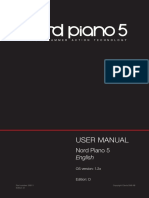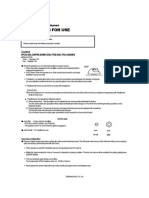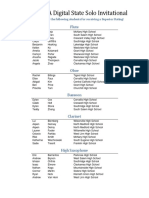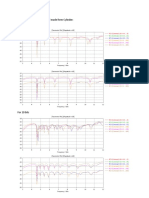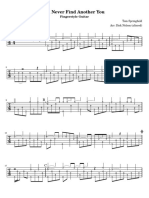mouthpiece from the top (figure If the gauge is crooked (figure airplane wing (balancing of
2). The position at which the 4), then the reed is not sealing “C”), each wing needs to be
® gauge lightly comes to rest is well on the mouthpiece table identical for consistent air-flow
MADE IN USA the spot on your mouthpiece and is warped. Your reed is and lift. When the reed is in
Thank you for your purchase! where the mouthpiece curve also leaking at the beginning of balance with itself and the
begins (figure 3). The marking the facing curve, hence, is mouthpiece facing curve, sound
The ® Plaque and Gauge
lines on the plaque are in one losing playing and vibrational resonates better and your
set can be used to find millimeter increments. You efficiency. playing becomes very natural.
mouthpiece facing curve lengths may take note of this facing To remedy, use your ®
on most clarinet and saxophone curve length measurement or The ® Plaque may be
mouthpieces, as well as Tool to flatten the reed, as
mark the side of the needed. Figure 5 depicts a flat used as a traditional plaque to
transferring those facing mouthpiece, lightly, with a
measurements onto the reed. reed that seals properly at the support a reed while you are
pencil or marker. mouthpiece facing. The making adjustments. Use the
To find your mouthpiece’s Gauging reed flatness: horizontal line depicts the start top side, curved end marked
facing curve length: Slip the gauge between the reed of the facing curve. This line is “tip work,” see picture. Avoid
and the mouthpiece to ensure the spot where your reed needs nicking or working a reed on
Place the ® Plaque there is an even/level seal with to seal on the mouthpiece table the underside / flat side, the side
straight on the mouthpiece table, that lies flat against the
with the top line even and Figure 2 mouthpiece table when
Figure 4
parallel with the mouthpiece tip. measuring mouthpiece facing
(See figure 1) For best stability curve. This must remain
and accuracy of measurement,
place the thumb of your
dominant hand at approximately
where the mouthpiece table and
window (open area under the
reed) begin and use firm
pressure.
Slip the ® Gauge
Figure 3 and side rails. Balancing of the
between the plaque and the reed is initially done on left and
right hand sides of the spine
(the shaded area shown on the
Figure 1 reed), from letters “A” to completely flat and smooth in
“B” (the facing line). Think of order to maintain accurate
each side of the reed as an facing measurements with the
gauge. Clean plaque with soap
Figure 5 and water or non-alcohol based
reed and mouthpiece. The cleaners. Do not clean with
gauge should stop perpendicular alcohol.
to the mouthpiece facing. In
optimum position, you will have
the gauge sitting at the start of All Rights Reserved
your mouthpiece’s facing curve. ® 2018
www.ReedGeek.com



